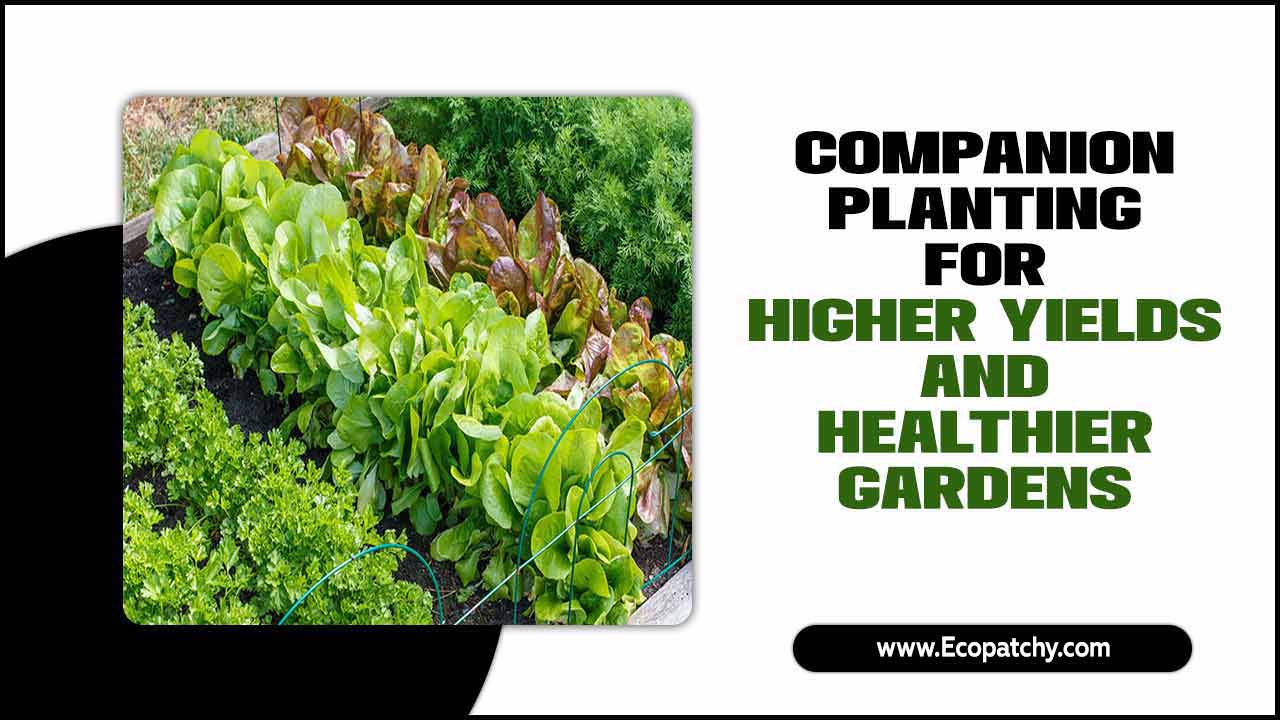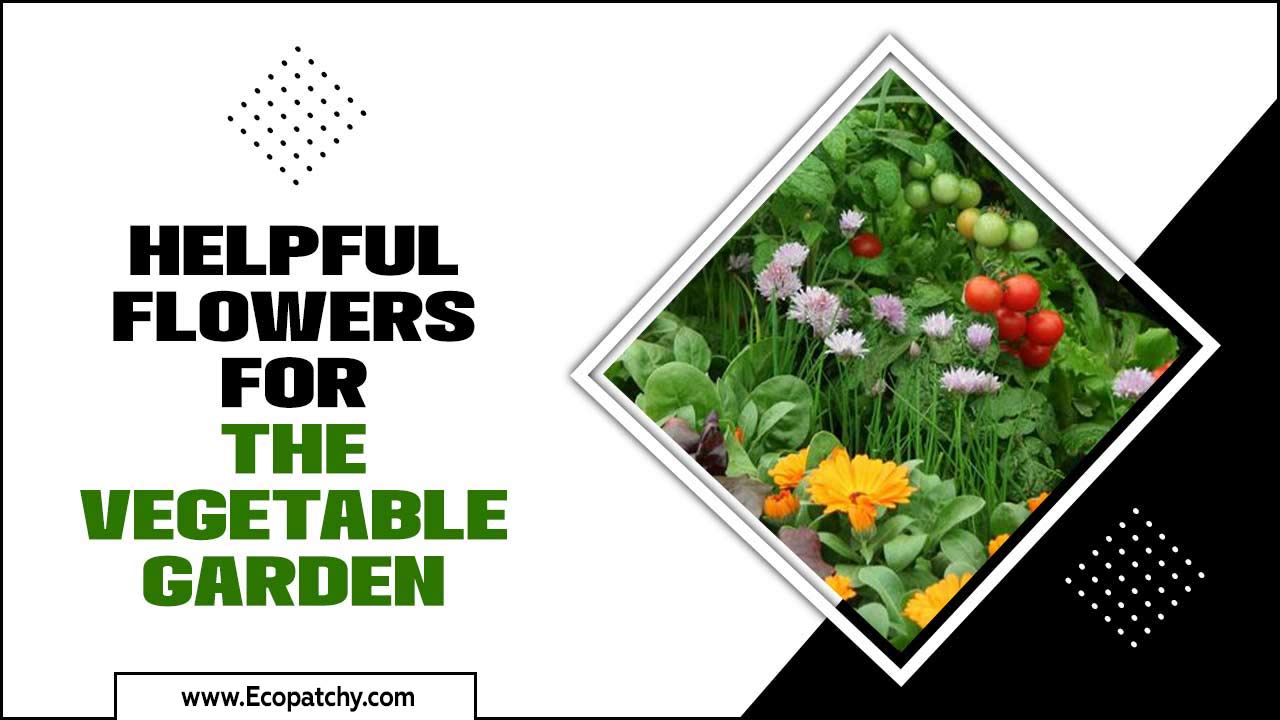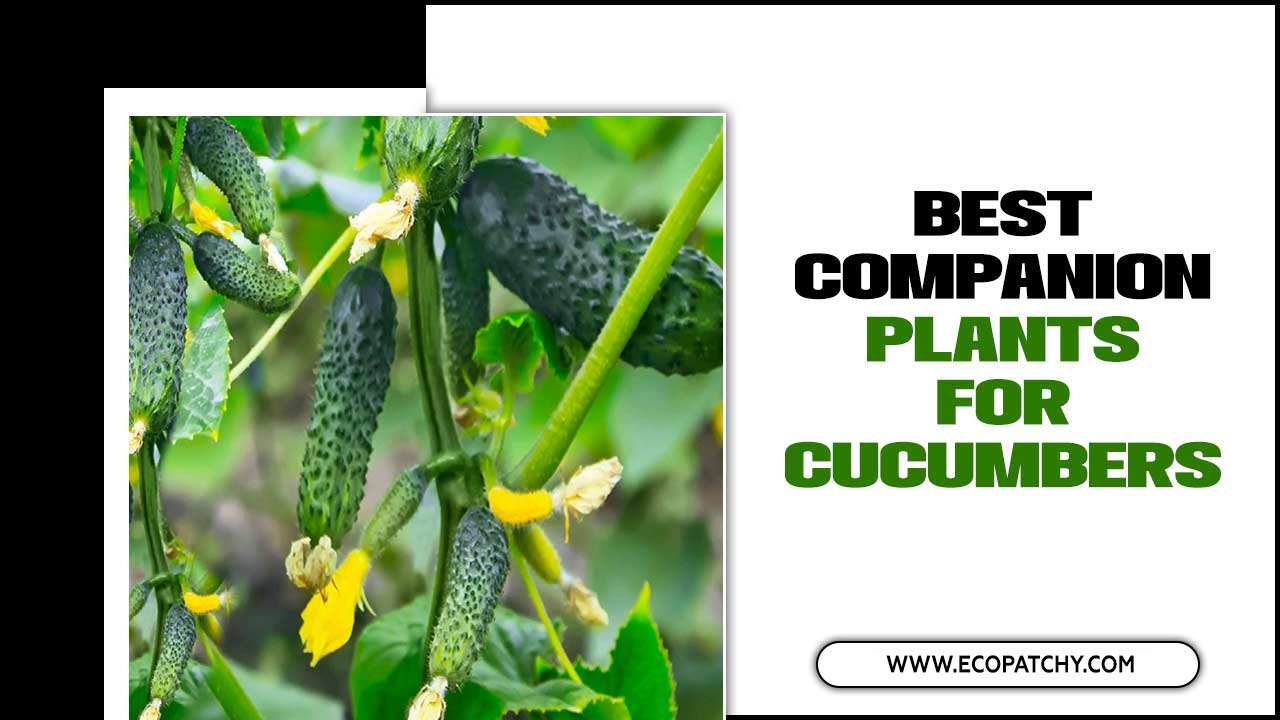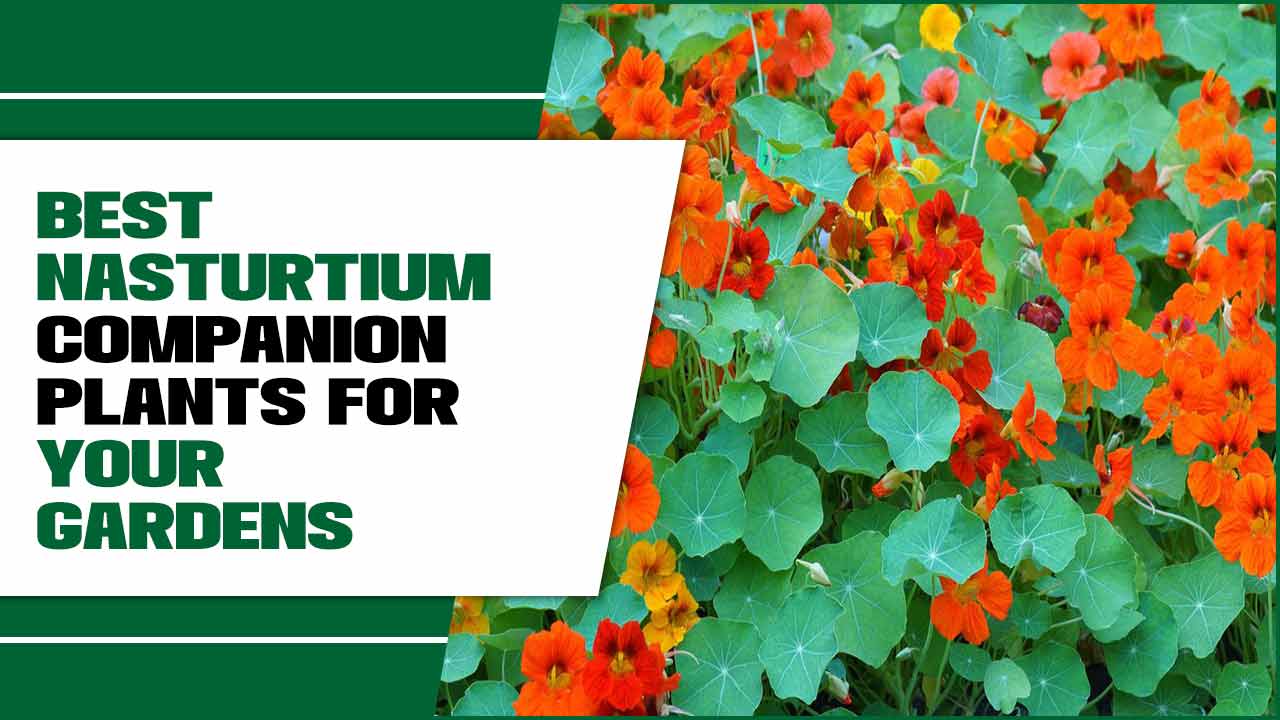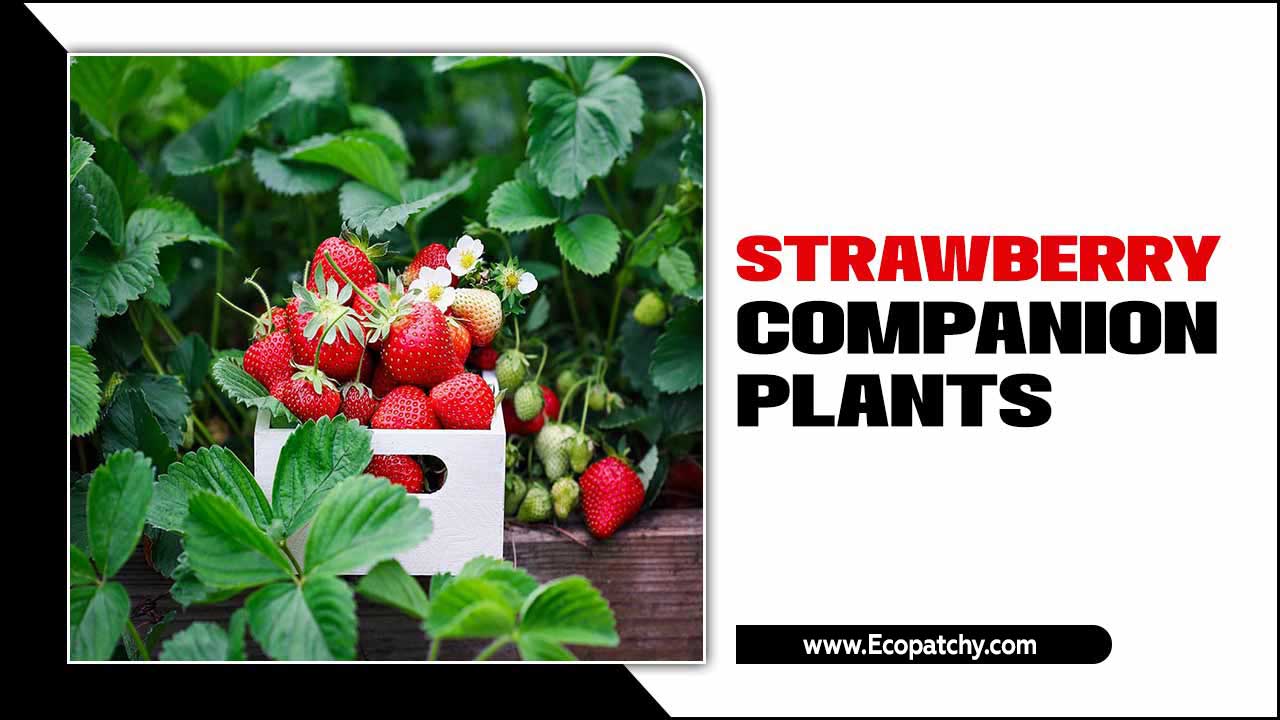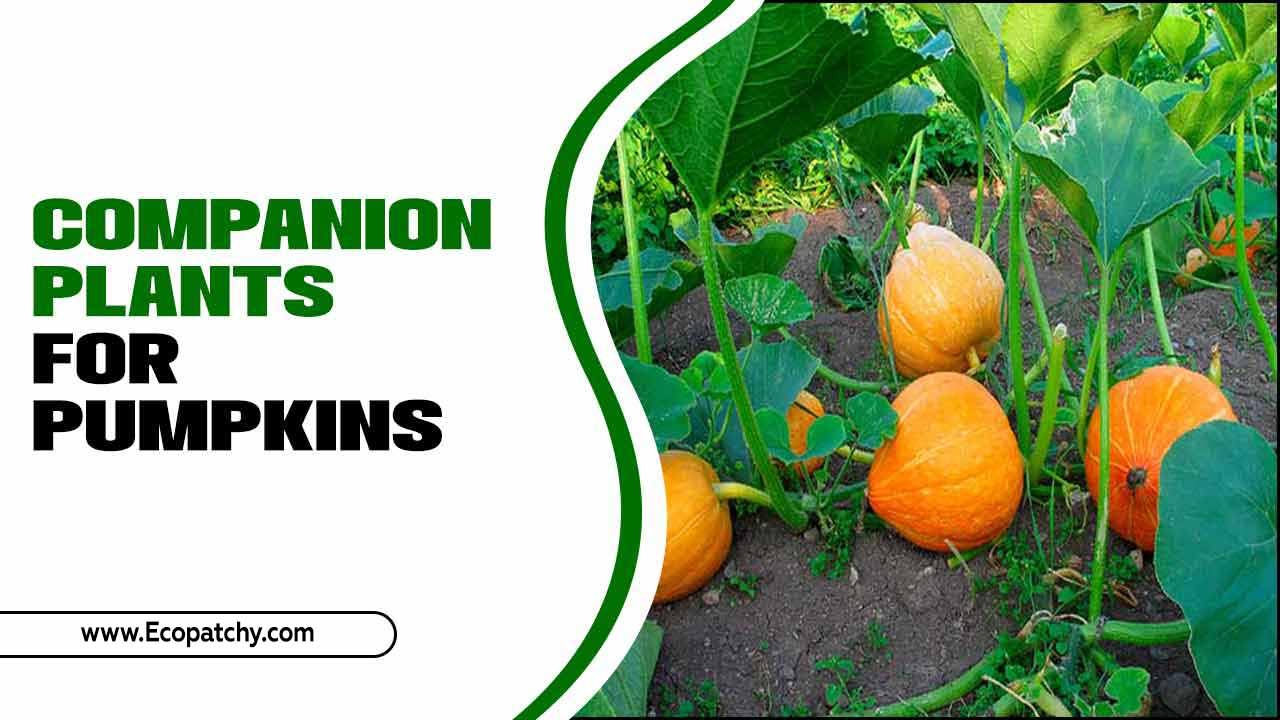Gardening is a rewarding and enjoyable activity that allows individuals to connect with nature and beautify their surroundings. However, creating a thriving and healthy garden also requires knowledge and careful planning.
One important aspect of gardening is selecting the right companion plants for your flowers or vegetables. Here, we will discuss the best marigold companion plants for your garden & the concept of companion planting, the role of marigolds, and the advantages of planting them in your garden.
We’ve also compiled a list of the top 15 best marigold companion plants to help you achieve optimal results. Additionally, we’ll cover some flowers that go well with marigolds, plants to avoid placing near them, growing marigolds with peppers, and final tips for successful companion planting with marigolds.

The Concept Of Companion Planting
Companion planting involves strategically placing plants together to benefit each other. Doing so can improve pest control, soil health, and overall plant growth in your vegetable garden. Certain plants, like marigold flowers, have natural repellent properties that can deter pests from nearby crops.
It also helps maximize garden space and increase crop yields. Research and plan companion plant combinations based on their compatibility and benefits to make the most of companion planting. This guide will help you choose the best companion plants for your summer garden and ensure a successful growing season.
The Role Of Marigolds In Companion Planting
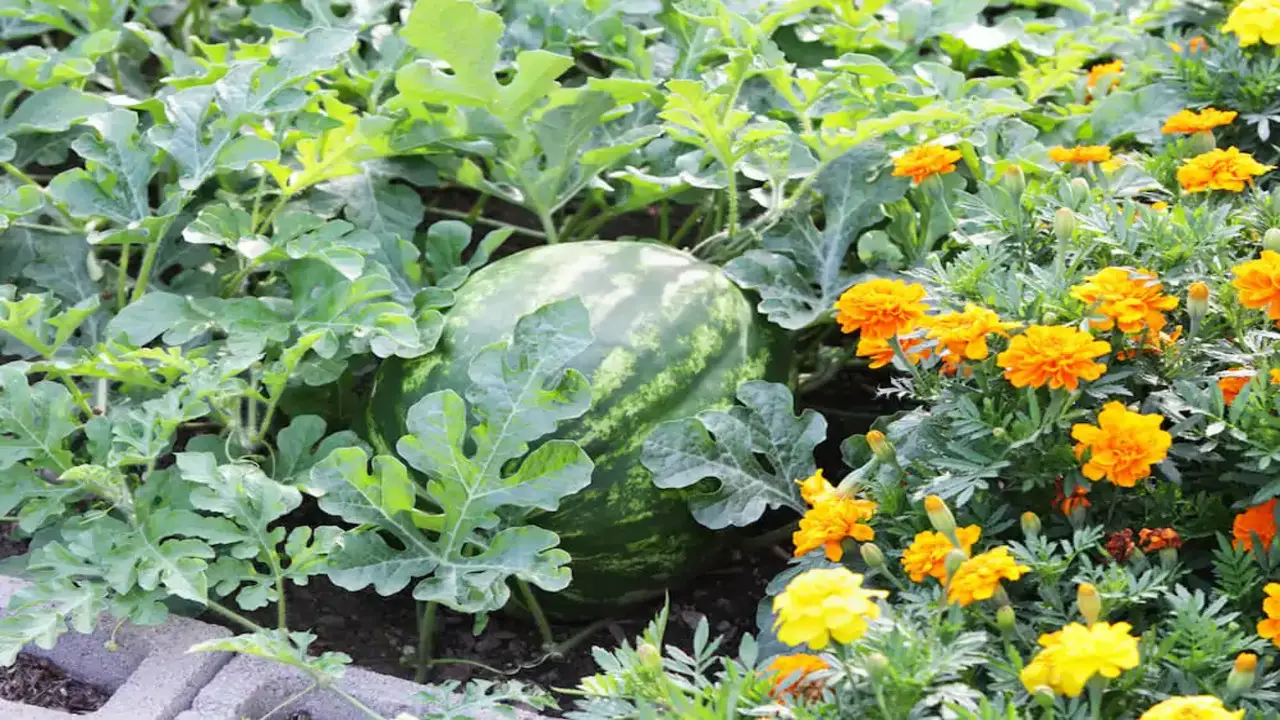
Marigolds play a crucial role in companion planting. Their pest-repellent properties make them a popular choice among gardeners. These vibrant flowers emit a scent that can deter harmful insects like aphids and cabbage moths, protecting the nearby crops.
Additionally, the root systems of marigolds release compounds that suppress nematode populations in the soil, creating a healthier growing environment. Marigolds also attract beneficial insects such as predatory wasps, which prey on garden pests, further enhancing pest control. The presence of marigolds in a vegetable garden can improve pollination and overall plant health, leading to better yields and a thriving, diverse ecosystem.
Advantages Of Planting Marigolds In Your Garden
Marigolds offer several advantages when planted in your garden. They attract beneficial insects, such as predatory wasps, that act as natural pest control. Additionally, their vibrant colors and beauty add aesthetic appeal to your garden.
Marigolds have a long flowering season, providing continuous blooms from early summer to the end of the season. Moreover, their root systems help improve soil health by releasing compounds that suppress nematode populations. On top of that, marigolds are easy to grow and require minimal maintenance. By including marigolds in your vegetable garden, you can enjoy the benefits of good companion plants and fewer pests throughout the growing season.
Top 14 Best Marigold Companion Plants For Your Garden

When it comes to gardening, choosing the right companion plants can make a big difference in the health and productivity of your garden. Marigolds are a popular choice for many gardeners due to their vibrant colors and ability to repel pests.
But did you know that marigolds also have companion plants that can enhance their growth and provide additional benefits? By planting these companion plants alongside your marigolds, you can create a diverse and thriving garden that is not only beautiful but also beneficial for the overall health of your plants. So, experiment with different combinations to find the perfect mix of marigold companions for your garden! Here are the top 15 best marigold companion plants for your garden:
1.Tomatoes
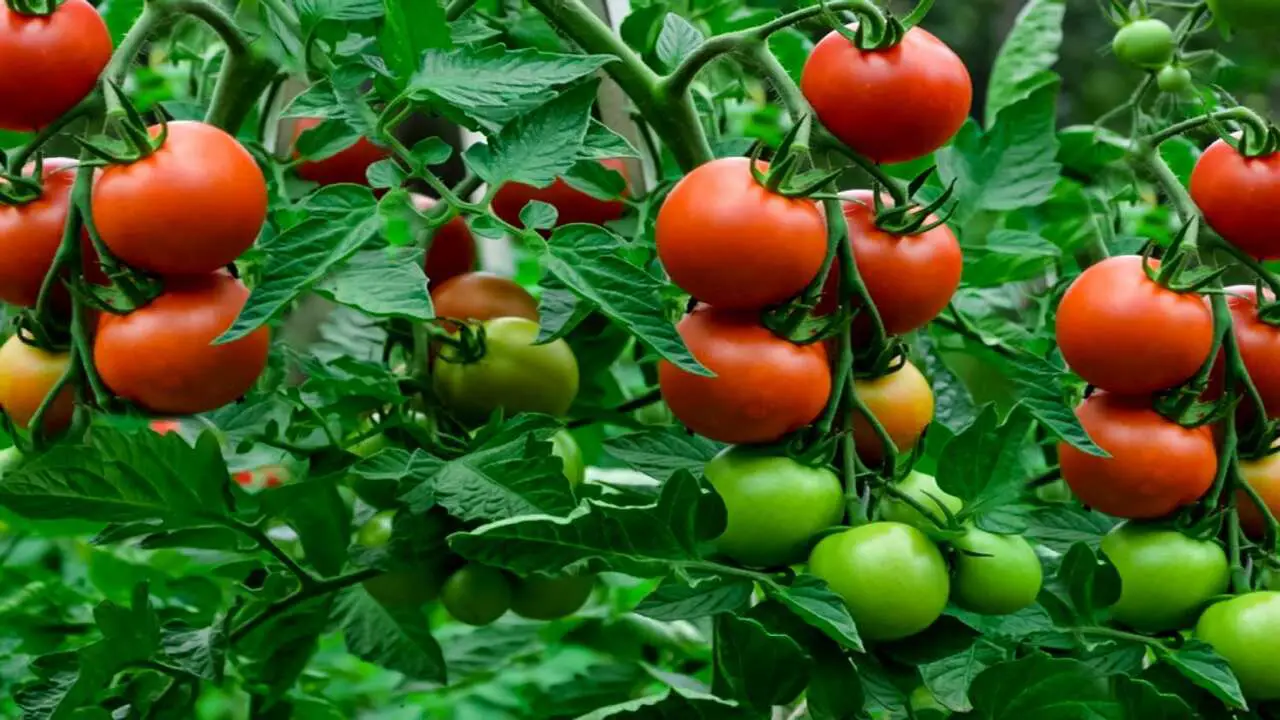
Marigolds are excellent companion plants for tomatoes, repelling pests and attracting beneficial insects. Their strong scent can mask the scent of tomatoes, deterring certain pests. Planting marigolds near tomatoes helps prevent diseases like powdery mildew and improves overall plant health and yield.
Consider interplanting different varieties of marigolds with tomatoes for added benefits. Marigolds add vibrant color and beauty to your vegetable garden, making them a good companion plant choice. They thrive in moist soil and are easy to grow. You can enjoy a bountiful harvest with fewer pests by planting rows of marigolds alongside tomatoes.
2.Potatoes
Potatoes benefit from companion planting with marigolds in several ways. Marigolds can repel pests like Colorado potato beetles, reducing the risk of infestations. The strong scent of marigolds can also help mask the scent of potatoes, making them less attractive to pests.
Additionally, planting marigolds with potatoes can improve soil health and enhance plant growth. To create a visually appealing arrangement, consider using different varieties of marigolds alongside your potato rows. This companion planting technique helps protect your potatoes and adds beauty to your vegetable garden.
3.Nasturtium

Nasturtiums make an excellent companion plant for marigolds in the vegetable garden. These vibrant flowers add a pop of color and attract predatory insects that help control pests. Nasturtiums can serve as a great ground cover with their long trailing vines, creating a visually appealing companion for marigold flowers.
They have shallow root systems, making them compatible with marigolds without competing for nutrients. By planting nasturtiums alongside marigolds, you can deter pests and improve the overall health of your garden. Add rows of marigolds and nasturtiums to create a beautiful and pest-resistant summer garden.
4.Trap Crop
Trap crops like radishes or kale alongside marigolds can divert pests away from your main crops. These sacrificial plants act as alternative food sources, luring pests away from your valuable plants. Marigolds planted as trap crops attract and reduce the impact of common pests like aphids or spider mites.
By strategically planting trap crops throughout your garden, you can create a natural pest control system and protect your marigolds without relying on harmful pesticides. This sustainable and eco-friendly approach ensures fewer pests and healthier marigold flowers throughout the growing season.
5.Pest Repellent
Marigolds have long been recognized as a natural pest repellent in the vegetable garden. Their strong scent deters many common garden pests, including mosquitoes, whiteflies, and nematodes. By planting marigolds near vulnerable vegetables or herbs, you can create a pest-resistant environment and reduce the need for chemical interventions.
The aroma of marigolds also masks the scent of nearby plants, making it harder for pests to locate their host plants. Additionally, marigolds are a good companion plant as they attract predatory insects that feed on pests. Incorporating marigolds into your garden can promote overall plant health and help maintain a thriving growing season.
6.Reduce Nematodes
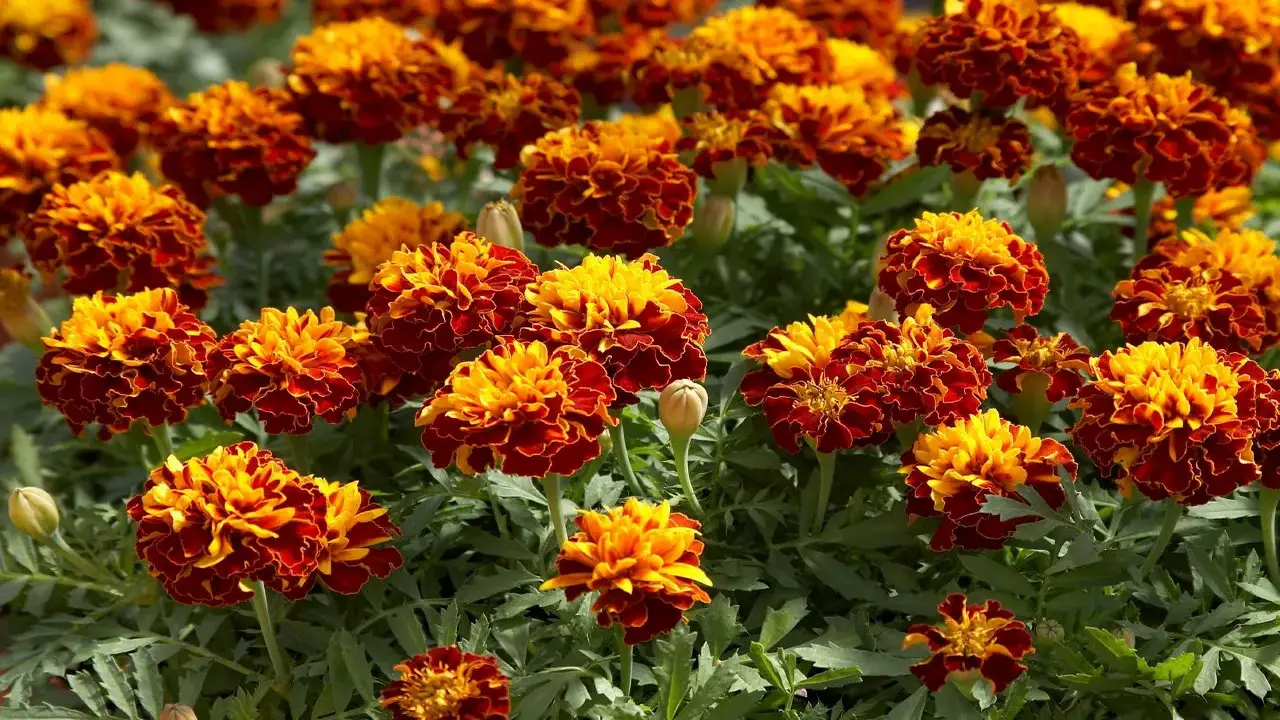
Marigolds make excellent companion plants for your vegetable garden because they can reduce nematode populations in the soil. These microscopic worms can damage plant roots and hinder nutrient uptake, but marigolds release compounds from their roots that repel nematodes over time.
By planting marigolds in rotation with susceptible crops, you can prevent nematode infestations and improve soil health. This means fewer pests and healthier plants in your garden. Marigolds truly are a good companion plant, serving as a natural nematode deterrent and protecting your garden from this common soil-borne pest.
7.Additional Yields
Marigolds are good companion plants and can enhance the yield and quality of other crops in your vegetable garden. Marigolds have been proven to increase fruit production and improve flavor when planted alongside tomatoes. French marigolds, in particular, are beneficial for tomato plants.
Additionally, marigolds can attract pollinators, leading to increased fruit sets and overall productivity in the garden. By incorporating rows of marigolds into your garden layout, especially during the growing season from late spring to early summer, you can maximize the yield and success of your other crops.
8.Ground Cover
Marigolds make for a beautiful and effective ground cover in your garden. With their dense foliage, they not only add a burst of color but also help smother weeds, reducing the need for excessive mulching. The marigold ground cover serves as a natural barrier, retaining moisture in the soil and preventing erosion.
It’s a low-maintenance option that adds visual interest and functionality to pathways, flower beds, or borders. Consider using marigolds as a living mulch, enhancing your garden space’s aesthetics and overall health. With marigolds as your ground cover, you can enjoy a vibrant and weed-free garden throughout the growing season.
9.Dill

Planting dill alongside marigolds in your vegetable garden can have multiple benefits. Both dill and marigolds attract predatory insects like ladybugs and predatory wasps, which help control common pests such as aphids and cabbage worms.
In addition to pest control, dill adds height and texture to your garden, creating a visual contrast with the marigold flowers. The aromatic dill foliage also helps mask the scent of nearby plants, making them less attractive to pests. You can create a diverse and balanced ecosystem that promotes plant health throughout the growing season by interplanting dill and marigolds.
10.Carrots
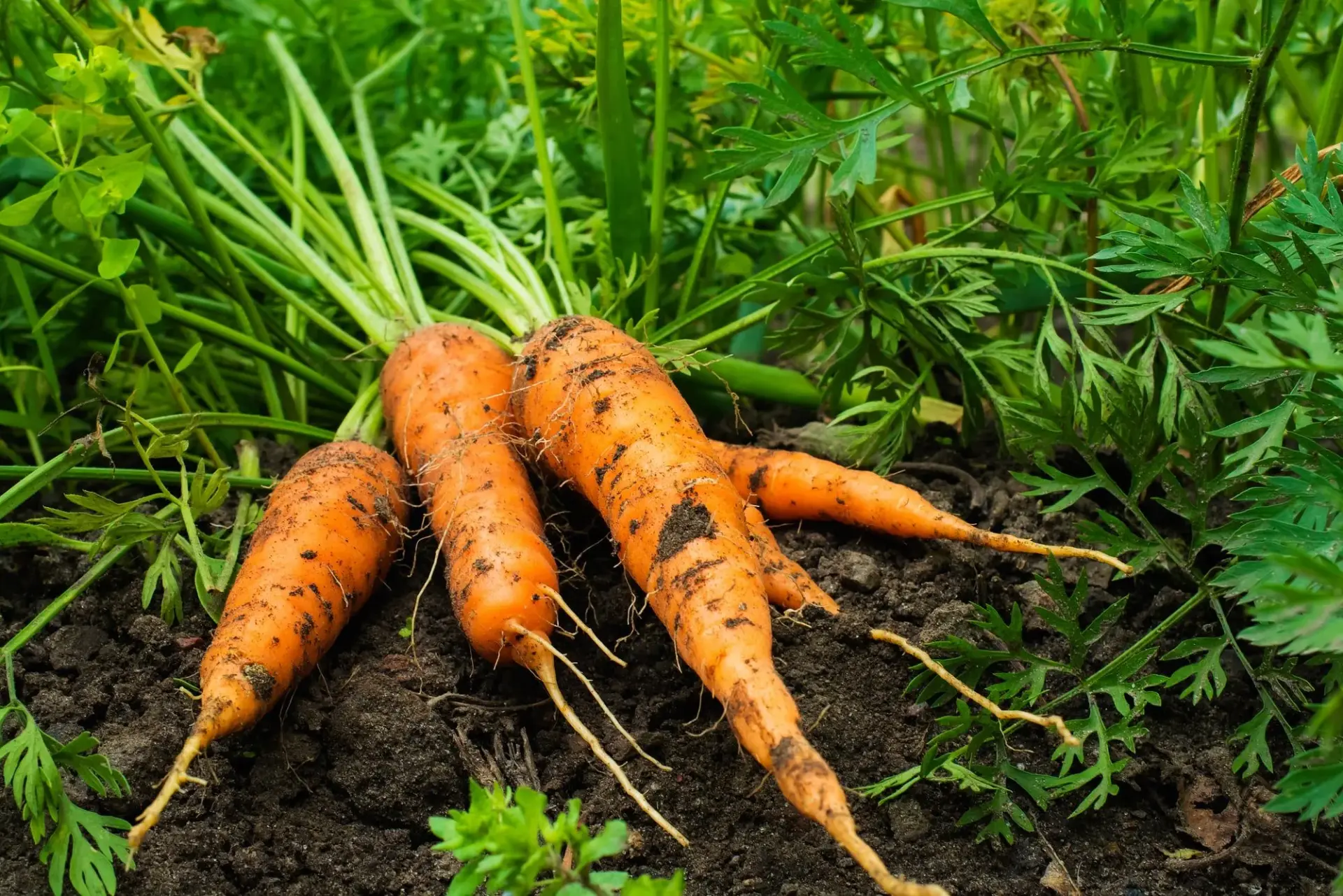
Marigolds and carrots are excellent companions in the garden, benefiting each other in multiple ways. Marigolds repel pests like nematodes and carrot flies, safeguarding the delicate roots of carrots. In return, carrots provide shade and ground cover for marigolds, reducing weed competition and conserving soil moisture.
Marigold’s vibrant flowers attract pollinators, enhancing the yield and quality of carrot crops. By planting marigolds alongside carrots, you can improve your garden’s overall health and productivity. This combination is a perfect example of a good companion plant pairing, where each plant contributes to the well-being of the other.
11.Beets
Beets and marigolds are a great combination in the vegetable garden. They complement each other’s growth, making them good companion plants. Marigolds repel pests like leaf miners, which can harm beet crops. Additionally, beets have a shallow root system that allows them to coexist well with the deeper-rooted marigolds.
The bright flowers of marigolds add a pop of color to the earthy tones of beet leaves and roots, creating an aesthetically pleasing garden bed. Planting marigolds alongside beets can enhance their growth and create a pest-resistant environment.
12.Chives
Chives make an excellent companion plant for marigolds in the vegetable garden. These tangy herbs repel harmful insects and attract beneficial ones like bees and butterflies. Chives add a flavorful punch to dishes such as salads, soups, and sauces.
They are easy to grow and require minimal maintenance, making them a perfect addition to any garden. When planted near marigolds, chives also help improve soil quality by releasing nutrients into the ground. Additionally, chives have anti-fungal properties that protect marigolds from diseases like powdery mildew. In summary, chives are a good marigold companion plant, benefiting both the garden and the dinner plate.
13.Garlic
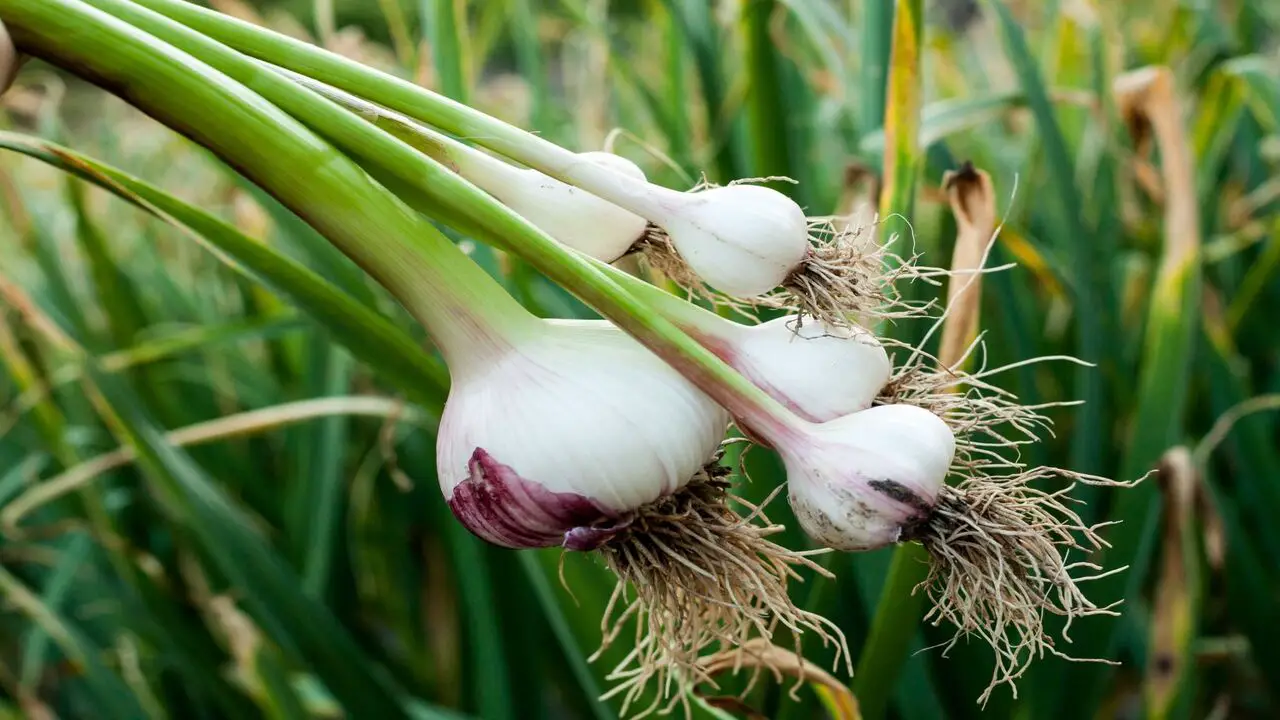
Garlic is a good companion plant for marigolds as it helps repel pests like aphids and mosquitoes. By planting garlic near marigolds, you can also improve the soil quality by increasing nitrogen levels. Garlic has antifungal properties that can prevent diseases in nearby marigold plants.
Garlic and marigolds create a natural barrier protecting other plants from pests and diseases. When planting garlic bulbs, do so in the fall for a summer harvest, and space them out properly to ensure optimal growth. You can enjoy healthier plants and fewer pests by including garlic in your vegetable garden alongside marigolds.
14.Oregano

Oregano is an excellent marigold companion plant, which can repel harmful insects and attract beneficial ones. Additionally, oregano is also a versatile culinary herb that can be used in various dishes. It is relatively easy to grow and requires minimal maintenance, making it a valuable addition to any garden.
When planting oregano alongside marigolds, ensure that each plant has enough space to grow and avoid overcrowding. Additionally, oregano can be grown in containers, making it suitable for small gardens or balconies. With its pest-repellent properties and culinary uses, oregano is a must-have companion plant for your marigold garden.
Marigold Companions Among Flowers
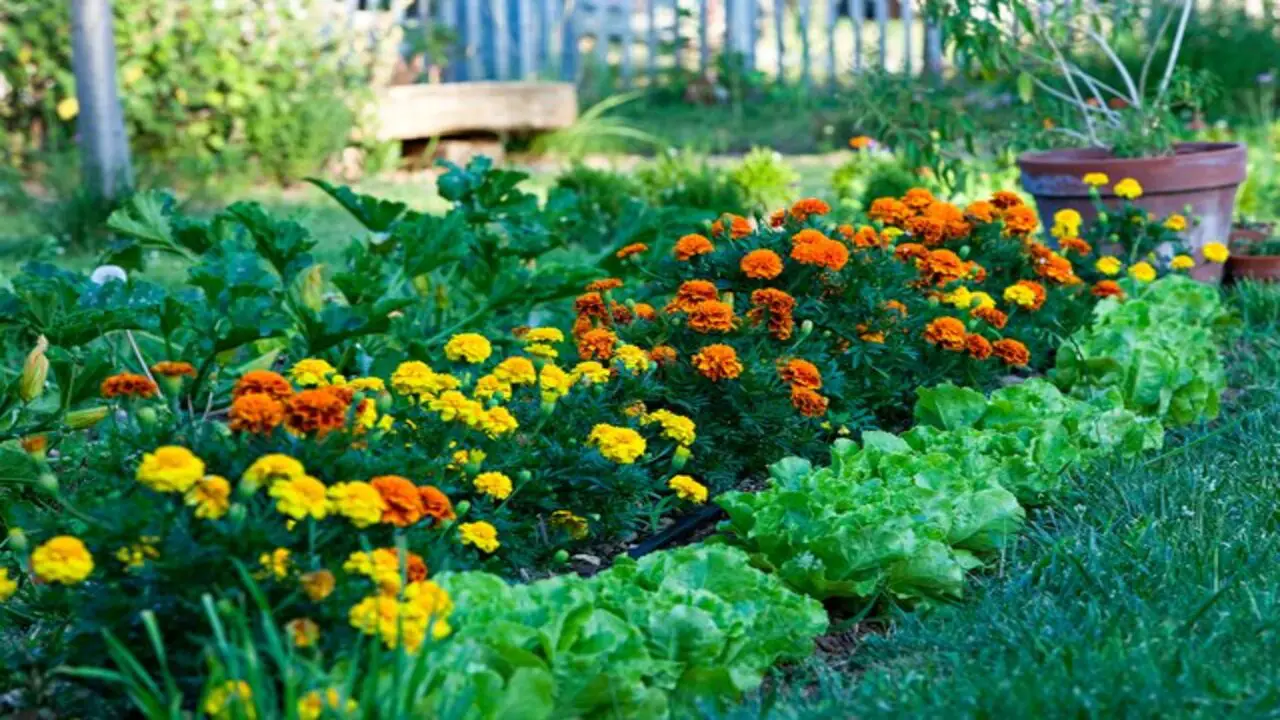
Marigolds, with their vibrant colors and attractive blooms, can make great companions for various flowers in your garden. They pair well with bachelor buttons, creating a beautiful combination in flower beds. Another option is planting marigolds alongside sweet alyssum, which results in an eye-catching display.
Calendula officinalis is another flower that pairs excellently with marigolds in terms of aesthetics and growth compatibility. For a visually appealing garden, consider pairing marigolds with colorful tagetes spp. Marigolds are universal companions, easily pairing well with many flower varieties, making them a versatile and beneficial addition to any flower garden.
Plants To Avoid Placing Near Marigolds
When choosing companion plants for your vegetable garden, it’s important to consider which ones may hurt each other. Marigolds, known for their vibrant and eye-catching flowers, are often considered a good companion plant for many vegetables. However, there are specific plants that should be avoided when planting marigolds. For example, cucumbers should not be planted near marigolds, as they attract cucumber beetles.
Similarly, keeping marigolds away from potatoes is best to avoid attracting Colorado potato beetles. Marigolds should not be placed near tomato plants, as this can help prevent powdery mildew. Peppers and beans are also considered bad companions for marigolds due to different growing requirements and the potential attraction of pests like Mexican bean beetles.
Can Marigolds And Peppers Be Grown Together?
Marigolds and peppers can indeed be grown together in the garden; they make great companion plants. Marigolds are known for repelling pests such as aphids, nematodes, and whiteflies, which are common pests for pepper plants. The strong scent of marigolds is believed to deter these pests from attacking the peppers.
Additionally, marigolds attract beneficial insects like ladybugs and lacewings, which can help control other garden pests. Planting marigolds alongside your pepper plants can help protect them from pests and add a pop of vibrant color to your garden. So plant some marigolds alongside your peppers for a beautiful and pest-free garden!
Final Tips For Successful Marigold Companion Planting
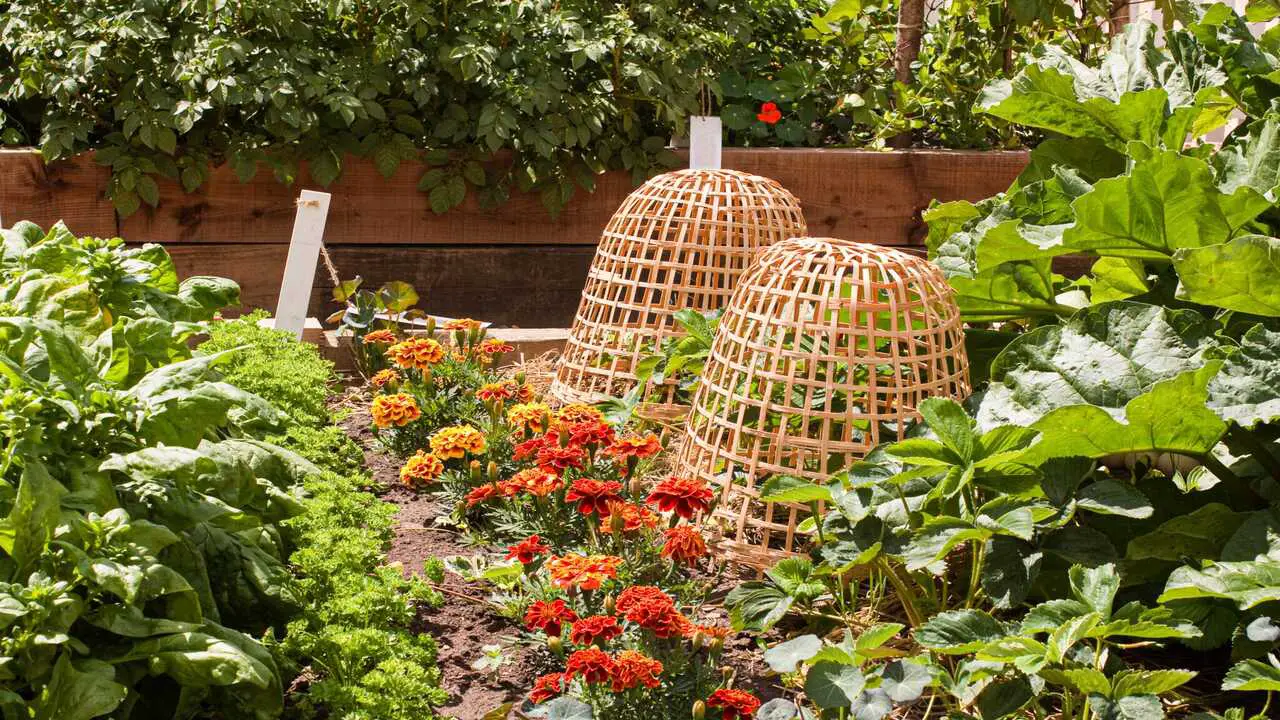
There are a few final tips to remember when it comes to successful marigold companion planting. By following these final tips, you can create a beautiful and pest-resistant garden with the help of marigold companion plants. Here are some bullet points to help you make the most of your marigold companions:
- Please Choose The Right Plants: Marigolds are known to repel certain pests, so consider planting them alongside vegetables or flowers susceptible to them. For example, marigolds can deter aphids, making great companions for roses or other plants that attract aphids.
- Consider Color And Height: Marigolds come in various colors and heights, so think about how they will complement the other plants in your garden. Tall marigolds can provide a backdrop for shorter plants, while colorful marigolds can add visual interest to any garden bed.
- Plant Strategically: To maximize the benefits of marigold companion planting, plant them throughout your garden rather than just in one area. This will help distribute their pest-repelling properties more evenly.
- Don’t Overcrowd: While marigolds can be beneficial companions, it’s important not to overcrowd your garden beds. Give each plant enough space to thrive and avoid competition for nutrients and sunlight.
Conclusion
Incorporating marigolds as companion plants in your garden offers numerous benefits. They act as natural pest repellents, reduce nematodes, provide additional yields, and serve as a ground cover. When planting marigolds, consider pairing them with tomatoes, potatoes, nasturtium, and trap crops for maximum effectiveness.
However, it’s important to avoid placing certain plants near marigolds, as they may hinder each other’s growth. Additionally, many gardeners wonder if marigolds and peppers can be grown together.
While marigolds can benefit pepper plants, monitoring their compatibility and adjusting accordingly is crucial. To ensure successful marigold companion planting, remember to maintain proper spacing, provide adequate sunlight and water, and pay attention to soil conditions. We hope you know the best marigold companion plants for your garden.
Frequently Asked Questions
1.What Can I Plant Next To Marigolds In My Garden?
Ans: Marigolds make excellent companion plants because they repel harmful insects and attract beneficial ones. Consider planting tomatoes, beans, peppers, cucumbers, or herbs like basil, parsley, and chives next to marigolds. However, avoid placing marigolds near brassica crops such as cabbage or cauliflower as they may hinder their growth.
2.What Plants Pair Well With Marigolds?
Ans: Marigolds make great companions for a variety of plants. They pair well with the vegetable garden’s tomatoes, peppers, and eggplants. Basil and thyme are compatible herbs. For flowers, consider zinnias, cosmos, and petunias. Just be sure to avoid planting marigolds with beans or brassicas.
3.What Are The Best Marigolds To Plant With Vegetables?
Ans: French marigolds are excellent companions for vegetables. They repel pests like nematodes, aphids, and whiteflies while attracting beneficial insects like ladybugs and parasitic wasps. Good vegetable companions for French marigolds include tomatoes, peppers, and eggplants.
4.Where Should I Put Marigolds In My Garden?
Ans: Marigolds are versatile plants that can be placed in various spots in your garden. They work well as borders, in containers, or as bedding plants. Choose a sunny spot with well-draining soil, as marigolds thrive in full sun. Consider planting them near vegetables like tomatoes and peppers to help deter pests.
5.Why Aren’t My Marigolds Blooming?
Ans: Marigolds are not blooming due to inadequate sunlight, improper watering, lack of deadheading, and excessive fertilizer use. Ensure your marigolds receive enough sunlight, water them properly, regularly remove spent flowers, and avoid over-fertilization to encourage abundant blooms.


